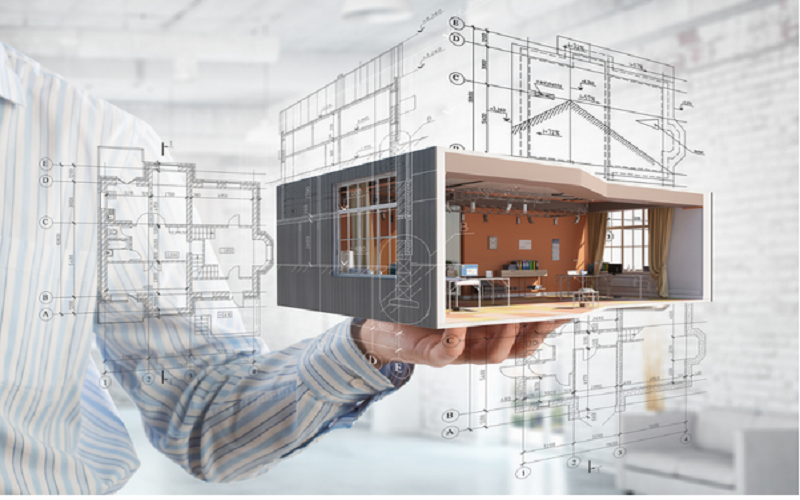The presentation and design of building projects have relied on architectural models throughout their history, which have played an important part. They are concrete illustrations of architectural theories, helping architects, clients, and stakeholders to see the finished result. In the last few years, technological advancements have significantly impacted architectural model accuracy and fabrication. 3D printing companies have revolutionized the way these models are generated, increasing both architectural model accuracy and efficiency. This piece examines the relevance of architectural model precision, a range of fabrication approaches, and how 3D printing affects the architectural field.
1. Comprehension Of Architectural Model Accuracy
Achieving high accuracy in architectural models is important for illustrating the intended design, scale, and relations of space within a project. When models provide accurate detail, architects and designers can assess issues such as proportions, materials, and light conditions, yielding insights that might not show up in two-dimensional drawings. With high accuracy in the models, architects and clients can communicate better, enhancing informed decision-making and lowering the risk of misunderstandings. Various elements play a role in how accurate architectural models are, which includes the selection of materials, the scale of the model, and the techniques of fabrication. A proper model has to accurately capture the dimensions and geometry of the intended building. Thus, during the design phase, paying attention to detail is very important, as any oversights might cause considerable inconsistencies in the final result.
2. The Importance Of Developing Model Fabrication
The process of making a physical manifestation of a design concept refers to model fabrication. This process involves a multiplicity of methods and materials, each providing special advantages and obstacles. Selecting a certain fabrication method may influence the model’s accuracy, endurance, and overall excellence.
Model fabrication practices historically involve making models by hand with materials that include wood, foam, and cardboard. While the ability to customize is high, these methods usually involve a lot of time and skill. Typically, handcrafted models are restricted in their capability to obtain elaborate details, particularly with complicated designs. In contrast, contemporary manufacturing techniques, including laser cutting and CNC machining, have become popular for their quick generation of precise models. These techniques empower architects to design detailed components that mesh together perfectly, improving the entire quality of the model.
3. 3d Printing: Transforming The Approach To The Architectural Model Creation
The introduction of 3D printing has changed the architecture field by enabling rapid prototyping and offering an exceptional level of detail for model fabrication. 3D printing firms enable architects to generate models that accurately illustrate their design without the extensive labour associated with traditional techniques. An important benefit of 3D printing is its ability to generate elaborate geometries that would prove very difficult to create through standard manufacturing methods. Thanks to their ability to design with precision, architects can achieve a higher fidelity to the initial concept. The accurate level enables better project visualization and can greatly affect client acceptance as well as project development.
4. Benefits Associated With Employing 3d Printing Companies
Working with 3D printing companies for architectural model fabrication delivers many advantages. Focusing on the creative components of their designs, architects utilize these companies, which specialize in sophisticated printing techniques and take care of the technical execution. Working alongside 3D printing companies cuts down the turnaround times, thereby decreasing the time required for model fabrication. Also, 3D printing companies typically offer entry to innovative technologies and knowledge that may not exist within the company itself. Collaboration in this regard can better the quality of the models produced, as these companies usually have a wealth of expertise and insight into modern printing techniques and materials. As a consequence, architects are capable of reaching higher levels of precision and superior quality in their models. Overlooking the cost-effectiveness of 3D printing is a mistake. While the upfront investment required for 3D printing technology is often considerable, the ability to rapidly generate models with limited waste frequently results in longer-term savings. Thanks to this economic advantage, 3D printing is a workable choice for architectural firms of all scales, allowing them to produce quality models while minimizing considerable financial burdens.
5. Problems Encountered In The Accuracy Of Architectural Models
Despite the benefits presented by today’s fabrication methods and 3D printing, challenges still exist in attaining model accuracy in architecture. A frequent problem is the possible mismatch between online models and their real-world equivalents. Incorrectness in dimensions, proportions, and details can arise as a result of errors that happen during the transition from a digital file to a printed model. Besides, the selection of materials can affect the model’s final precision. Because different materials may diminish or deform throughout the printing process, the produced models could fail to faithfully reflect the intended design. As a result, proper focus should be placed on the selection of materials, to ensure that they can precisely capture the desired attributes of the final architecture.
6. The Future Direction Of Architectural Model Creation
As technology keeps advancing, the architecture model fabrication industry is also changing its landscape. In future, trends are predicted to emphasize improving model accuracy and refining fabrication techniques. An encouraging trend is the marriage of artificial intelligence and machine learning within design and printing. The role of these technologies is to help architects enhance their designs for printability, making sure the final models are accurate and achievable. Also, enhancements in materials science are probably going to create novel printing materials that demonstrate improved characteristics, including flexibility, durability, and sustainability. As architects grow more aware of their environmental impact, eco-friendly materials are becoming more popular in their field. Third-dimensional printing that uses biodegradable or recyclable materials reflects the increasing importance placed on sustaining architecture. In addition, as the accessibility of 3D printing technology increases, it is reasonable to expect that smaller architectural firms will begin to adopt these technologies. The democratization of technology promises to let more designers produce quality models, which will enrich both creativity and innovation in their practice.
The design and presentation of architectural projects depend significantly on both the accuracy of architectural models and the methods for their fabrication. The adoption of 3D printing technology has changed the landscape entirely, presenting architects with chances for increased precision, efficiency, and creativity. The outlook for architectural model fabrication is optimistic, despite existing difficulties, thanks to technological and material improvements that will advance accuracy and sustainability. Partnering with 3D printing companies can elevate the quality of architectural models, enabling complex designs that were once infeasible. These companies specialize in services tailored to the requirements of architects, enhancing the efficiency of the prototyping process. In the evolution of the industry, the cooperation between architects and 3D printing companies will be essential in advancing architectural innovation.

